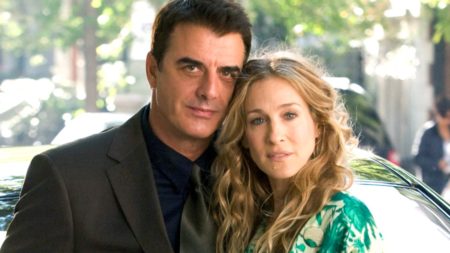Source: Today
We all grew up with the ideal TV couple in mind when it comes to romance and relationships. Whether you identified with Pacey and Joey, Chuck and Blair, Ross and Rachel or Big and Carrie, we watched on as these couples went through the dramatic highs and lows of getting together and falling apart over and over again. We were elated when they finally sorted themselves out and committed to happily ever after, but let’s be honest, how often does that work out in real life?
Love addiction is your real life Big and Carrie. It involves an individual living off the highs of the romance in a relationship, only to jump ship when the relationship moves into the more comfortable, stable and loving phase. The high is no longer there and so, like drug addiction, the person goes in search for that high elsewhere. The release of phenylethylamine in the brain, or the “love drug”, produces similar responses to that of eating chocolate and creates those love spikes that the addict is craving and we see in these TV dramas when couples break up and make up.
Love addiction can stem from incidents of lack of nurturing, low self-esteem and abandonment. This fear of abandonment is actually what drives the love addict into another person’s arms, at times even cheating on their current partner for the thrill of the love drug. In the end, the addict continues to experience the abandonment when they’re caught out or their interest in the relationship dramatically drops, causing their partner to pull the plug and leaving the addict in the familiar feelings of pain, anger and emptiness.
Professor Frances Quirk, psychologist at Deakin University, is an expert in couple relationships and attraction. “The beginning of a relationship is always better than the middle or the end… And in part that’s because it is all reproductive hormone-driven. There’s a period of limerence, which is about binding you together quickly from an evolutionary perspective, so you can reproduce and then you continue to be bound to each other in the act of raising offspring”.
Love addiction falls under the general criteria for other addictions, including:
- An ongoing (six months or more) preoccupation to the point of obsession with romantic fantasies and new relationships
- An inability to exercise control over romantic fantasies and new relationships
- Negative consequences directly and/or indirectly related to out-of-control romantic fantasies and serial relationships
Rather than looking at themselves internally and how they contribute to their failed relationships, love addicts play the blame game and externalise the failures to their date, partner or spouse as the cause of the problems. They tend to steer away from addressing their problematic behaviour by continuing onto the next relationship, where the highs start again and everything is just where they want it to be – challenge free, non-committal and non-threatening.
“It’s about the raising up of reproductive hormones of both partners, and then the engagement in physical intimacy, sexual activity, sensuality, psychological intimacy, emotional intimacy — all the things that reinforce the pattern of closeness… But then fairly quickly, the real world sweeps in, and you have a week where you’re really busy with work deadlines, or you get pregnant or you have a kid, and that biological cycle falls off” – Professor Quirk.
Those who are at risk of love addiction are those with:
- A personal or family history of addiction
- A personal or family history of a psychological disorder, such as depression, anxiety, bipolar disorder or another mental illness
- A history of unresolved trauma, such as neglect, abuse, abandonment, inconsistent parenting or domestic violence
- A history of childhood sexual abuse, either overt (physical abuse) or covert (an inappropriate emotional partnership with a parent)
- A history of inappropriate childhood exposure to pornography, sexual situations or other types of adult sexuality
According to author Ann Smith, there are several ways to break the cycle of love addiction:
- Take a step back and observe your behaviour. Are there any patterns from current or past relationships? This is best done when not in a relationship. This includes casual dating.
- Look out for any common themes. Do you see any patterns that commenced in childhood and are still present?
- Seek professional help before engaging in a relationship.
- Learn to take responsibility of your own happiness.
- Have a plan in place and stick to it. This will give you an opportunity to love yourself rather than resorting to others to fill any moments of sadness or emptiness.
- Accept you just as you are. If you can’t love yourself for who you are, how can anyone else?

